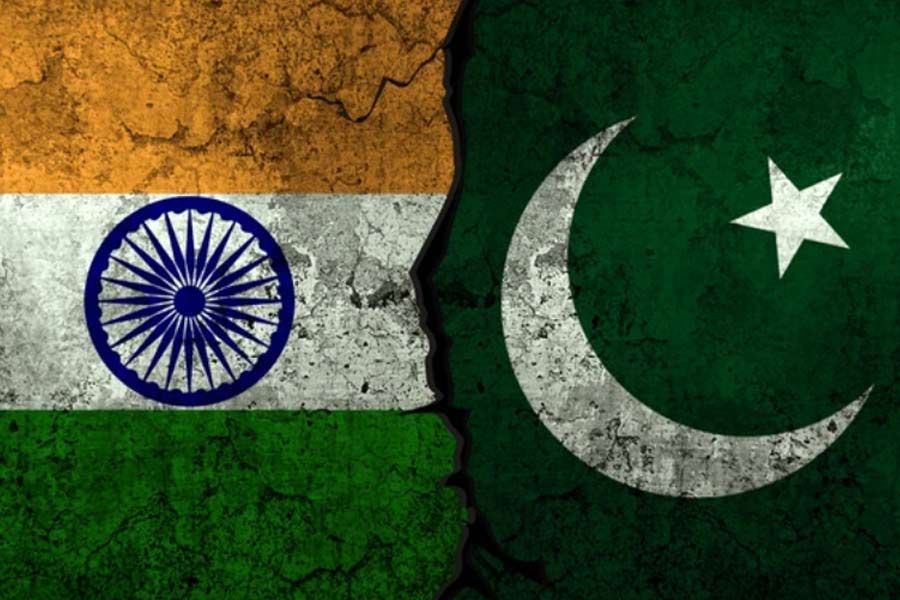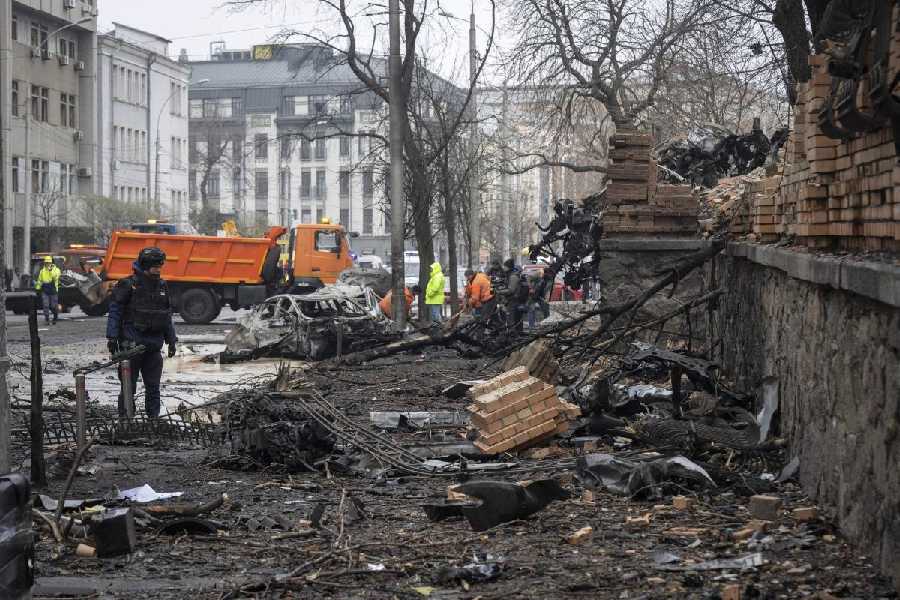|
|
| Behind the Turkish veil |
BYZANTIUM: THE SURPRISING LIFE OF A MEDIEVAL EMPIRE By Judith Herrin, Penguin, £15
Judith Herrin has dedicated this book to her young daughters who asked, “What is Byzantium?”. The same question was asked by a couple of workmen in her office. Many Indian students of history would be equally ignorant. In most history courses, Byzantium rates a cursory mention possibly only in its end — the siege of 1453, when “the queen city” Constantinople fell to the Turks under Mehmet II. This brought to an end an empire, which, in Herrin’s words, “was old, many centuries old, by the time of Charlemagne and Haroun al-Rashid”. In this reading, this catastrophic event was supposedly the trigger for the glorious Renaissance, which set off the era of European domination: Western Europe “re-discovered” the treasures of Classical learning, that had been preserved in its libraries and academies.
The Byzantine Empire has been caricatured by Enlightenment philosophers like Montesquieu and Voltaire, for whom it became a repository for grandeur, deviousness, cruelty and effete despotism. (One of the meanings of “Byzantine” in The Compact Oxford Dictionary is “very crafty or underhand”.) For Gibbon, it was only interesting as a “passive link” with classical antiquity. Only the fall of the city encouraged Western appreciation of Byzantine scholarship. But even modern non-academic works, such as John Julius Norwich’s three volume history, are an entertaining chronicle of conspiracies, blindings and intrigues involving Patriarchs, rulers and corrupt eunuchs.
Yet the achievements of the Byzantine Empire have endured — the glorious mosaics and churches of Ravenna and Istanbul, the Orthodox faith (which has outlasted Communism) in Russia and much of eastern Europe, and the Kyrillic alphabet, to name a few. In India, one branch of the Syrian Christians of Kerala derives its allegiance from the Patriarch of Antioch, one of the archdioceses of the Byzantine Empire.
Judith Herrin sets out to rescue Byzantium from its negative stereotype, and explains why it is important to celebrate and remember its achievements. Although she is writing for the general reader, her work is informed by the latest scholarship, and makes use of letters, journals, and other primary sources, which recreate a civilization that combined both a devout Christianity and a linguistic tradition which linked it to ancient Greek culture. This was the empire that cherished and preserved the treasures of Classical civilization, producing critical editions of Homer, and committing to memory the speeches of Demosthenes and the dialogues of Plato. (It turns out that the school version of classical scholars fleeing the Turks to the courts of western Europe, with their precious manuscripts, is not entirely inaccurate.)
Herrin avoids a standard chronological procession of rulers, battles and sieges. She has adopted a more interesting and attractive approach: while keeping a broad chronological development, she focuses each short chapter on a representative theme, event, historical figure or monument.
There are chapters devoted to the sheer monumental grandeur of Constantinople and Hagia Sophia (in its day the largest building in the Christian world), the mosaics of Ravenna; others focus on key figures like Emperor Basil the Bulgar Slayer, or Kyrill and Methodius, the “Apostles of the Slavs”. Herrin points to the important role played by women — empresses like Theodora or Irene, or highly educated chroniclers, such as Princess Anna Komnena, whose Alexias is a major source. (There are few comparable female figures in the civilization of medieval western Europe — only Eleanor of Aquitaine comes to mind.)
Other chapters discuss important themes, such as Roman law developed by Justinian, the role of eunuchs, the explosive “Greek fire” used to devastating effect by Byzantine navies, the rift between Eastern and Western Christianity, and key events like the destruction of Constantinople during the Fourth Crusade and the final catastrophe of May 1453.
Herrin argues that “the most significant feature of Byzantium lies in its historic role in protecting the Christian West” from Muslim expansion during the early Middle Ages. By withstanding numerous sieges, even as Islamic armies overran its eastern marches, the Byzantine Empire, the successor to the eastern Roman Empire, allowed western Europe to develop its strengths at a time of political fragmentation. At the western end of Europe, Charles Martel defeated the Arab armies and forced them back over the Pyrenees. This enabled the idea of “Europe” to develop under Charles Martel’s grandson, Charlemagne. One can challenge this interpretation, given that Islam did spread to large areas of the Balkans after 1453.
A significant portion of the book deals with the Byzantine response to the rise of Islam. Its sternly monolithic nature provoked a major religious crisis in Byzantine history, the Iconoclastic Crisis — and the question of icon veneration. Herrin brings out the complex relationship between the vigorous new religion and the empire: at various times, it alternated between a certain wary co-existence and commercial/cultural exchange, and outright warfare.
As the Ottoman armies ate into the outlying provinces of the empire, Byzantium found itself surrounded, and its emperors became Ottoman vassals. Yet Emperor Manuel Palaiologus accompanied the Sultan on campaign, hunted with him by day and feasted by night. During the evenings, the Emperor and the Muslims engaged in dialogues on religion. It was from one such dialogue that Pope Benedict XVI recently quoted out of context a particularly harsh attack on Islam, and “for a moment, Byzantium was recruited into the ‘war on terror’”.
Whether or not one accepts Herrin’s central argument, she succeeds brilliantly in portraying Byzantium, and Constantinople in particular, as a vibrant, dynamic and cosmopolitan culture. As she writes, “The most striking characteristics of Byzantium was not its Christianity, spelled out in its historic councils and conversions, and celebrated in immense churches like Hagia Sophia or the domestic intimacy of household icons; nor its Roman organization and administration and imperial self-belief; nor its enduring ancient Greek inheritance and system of education: it was their combination.”
Today, it is still possible to discern the Byzantine Constantinople under the Islamic Istanbul — in the mosaics of Hagia Sophia and other churches converted into mosques, in the underwater cisterns that supplied the city with drinking water, the walls which withstood so many attacks, and, above all, in its character as a bustling metropolis. For visitors who have a vague idea that “Byzantium has something to do with Turkey”, Judith Herrin’s book is a marvellously accessible and lucidly written introduction to a neglected civilization and its continuing significance for world history. As she puts it, “if we need a word to describe the mendacity of our present political leaders, the bizarre incompetence of our own bureaucracies, the cunning selfishness and illegal mechanisms of our great corporations, or the intricate glamour of our global corridors of fame, then we should find the appropriate, modern adjective — and it is not ‘Byzantine’”.











